2025
Comparably’s Best Company Outlook
* Providing engineering services in these locations through SWCA Environmental Consulting & Engineering, Inc., an affiliate of SWCA.

From the experts we hire, to the clients we partner with, our greatest opportunity for success lies in our ability to bring the best team together for every project.
That’s why:
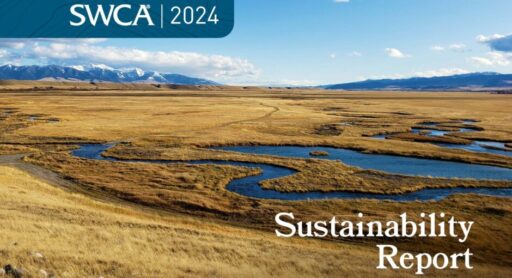
At SWCA, sustainability means balancing humanity’s social, economic, and environmental needs to provide a healthy planet for future generations.
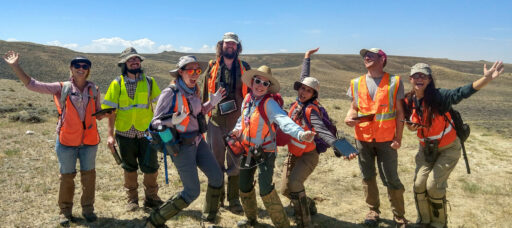
SWCA employs smart, talented, problem-solvers dedicated to our purpose of preserving natural and cultural resources for tomorrow while enabling projects that benefit people today.
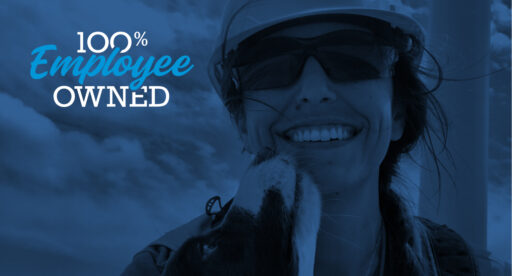
At SWCA, you’re not just an employee. You’re an owner. Everyone you work with has a stake in your success, so your hard work pays off – for the clients, for the company, and for your retirement goals.
U.S. Fish and Wildlife Service Proposes Listing of the Regal Fritillary Under the ESA
Doug has 25 years of biology and ornithology experience in the southern and western United States, Costa Rica, and Mexico, and is recognized as a regional expert in field ornithology. He also is the lead biologist for bat monitoring projects in SWCA’s Rocky Mountains and Plains region. He conducts field surveys, performs desktop review of scientific literature, and consults with agency resource specialists to address impacts on biological resources considered in National Environmental Policy Act (NEPA) documents. With general and specific knowledge of natural history across multiple tax and competence in local, state, and federal regulations pertaining to wildlife conservation and management, Doug advises on environmental study design and analysis, and peer reviews technical reports. He is published in peer-reviewed journals and is currently an associate editor of the peer-reviewed regional journal Western Birds.

Lindsey Bradshaw has been a professional wildlife biologist and member of the Wildlife Society for over 9 years. Lindsey has worked in various locations across the US, including Missouri, New Medico, Nevada, Oklahoma, Oregon, and Texas. Lindsey has worked in a variety of industries including solar development, Oil & Gas, and federal endangered species recovery plans. Lindsey has also worked at every level including private, State, and Federal agencies and hs acted as a client liaison to these agencies for several years.
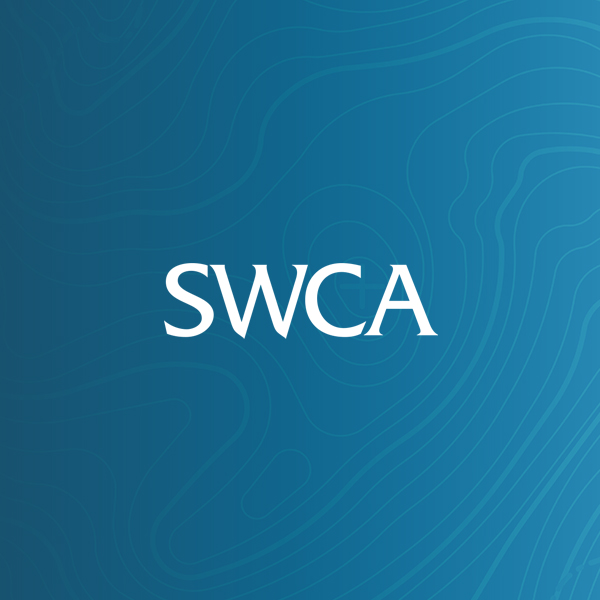

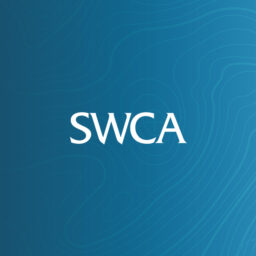
The regal fritillary (Argynnis idalia) is a large non-migratory butterfly historically known to occur in native grasslands on the east coast and throughout the Great Plains. On August 6, 2024, the U.S. Fish and Wildlife Service (USFWS) proposed listing the regal fritillary under the Endangered Species Act (ESA). The regal fritillary population consists of two subspecies: the eastern (A.idalia idalia) and the western (A.idalia occidentalis). Under the proposed listing, the eastern subspecies would be listed as an endangered species and the western subspecies would be listed as a threatened species with associated 4(d) rule provisions for take exemption. Exemptions covered under the 4(d) rule include routine livestock operations, fence construction and maintenance, livestock gathering and management, development and maintenance of livestock watering facilities, livestock grazing, non-broadcast noxious weed control, haying and mowing, prescribed fire, brush control, and mowing of rights-of-way and recreational trails.
The entire eastern regal fritillary population is isolated to the Fort Indiantown Gap National Guard facility in Pennsylvania. The western regal fritillary has a broad distribution that currently includes all or portions of 14 states: Arkansas, Colorado, Illinois, Indiana, Iowa, Kansas, Minnesota, Missouri, Nebraska, North Dakota, Oklahoma, South Dakota, Wisconsin, and Wyoming. At this time, no critical habitat has been identified by the USFWS for either subspecies.
The proposed listing of the regal fritillary was initiated as a result of declining populations, with impacting factors including increasing fragmentation and loss of grassland habitat, agricultural development, urban development, and herbicide application practices.
As the regal fritillary is a grasslands specialist that requires the presence of violets (Viola spp.) to complete its natural life cycle, project areas containing native grasslands with warm season bunchgrasses and violets are most likely to be impacted by the listing of the regal fritillary. The species is also drawn to riparian corridors where nectar sources are abundant and, therefore, is likely to be considered during any U.S. Army Corp of Engineers permitting processes in grassland landscapes. Adults will also occupy marginal grasslands (e.g., hayfields, ungrazed pasture) with sufficient nectar resources, but sites containing violets are required for egg-laying and larval development to support local population persistence. The species is not found in forested landscapes.
It will be important to assess if any of your projects occur within preferred habitat for the regal fritillary. Although proposed species are not protected by the take prohibitions under Section 9 of the ESA until the listing rule is finalized, under section 7(a)(4), federal agencies must confer with the USFWS if their action (e.g., issuing a permit) will jeopardize the species’ continued existence. If you have projects with permitting and construction timelines that may overlap with a final listing rule, informal consultation with USFWS may be appropriate to ensure avoidance and minimization measures are being incorporated into project planning.
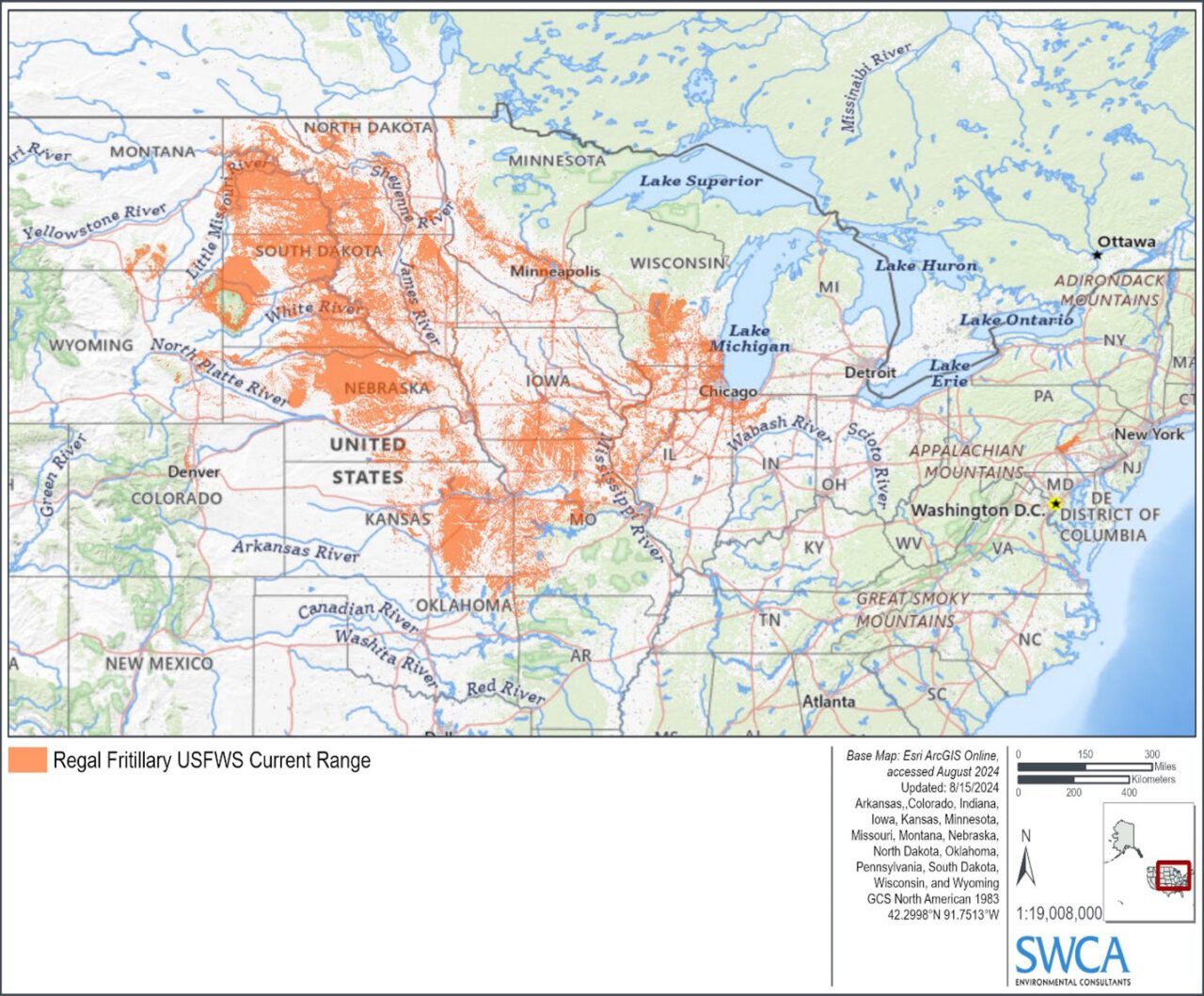
A public comment period is in place for this proposed listing until October 7, 2024. All comments may be submitted either electronically through the Federal eRulemaking Portal or by mail.
Details on the proposed listing and submittal information is available at: https://www.govinfo.gov/content/pkg/FR-2024-08-06/pdf/2024-16982.pdf#pa…
SWCA is ready to assist with submittal of comments to the USFWS, provide guidance on questions you may have as the listing process unfolds, and assist with initiating formal and informal USFWS consultation on projects where listing of the regal fritillary may be a cause for concern.